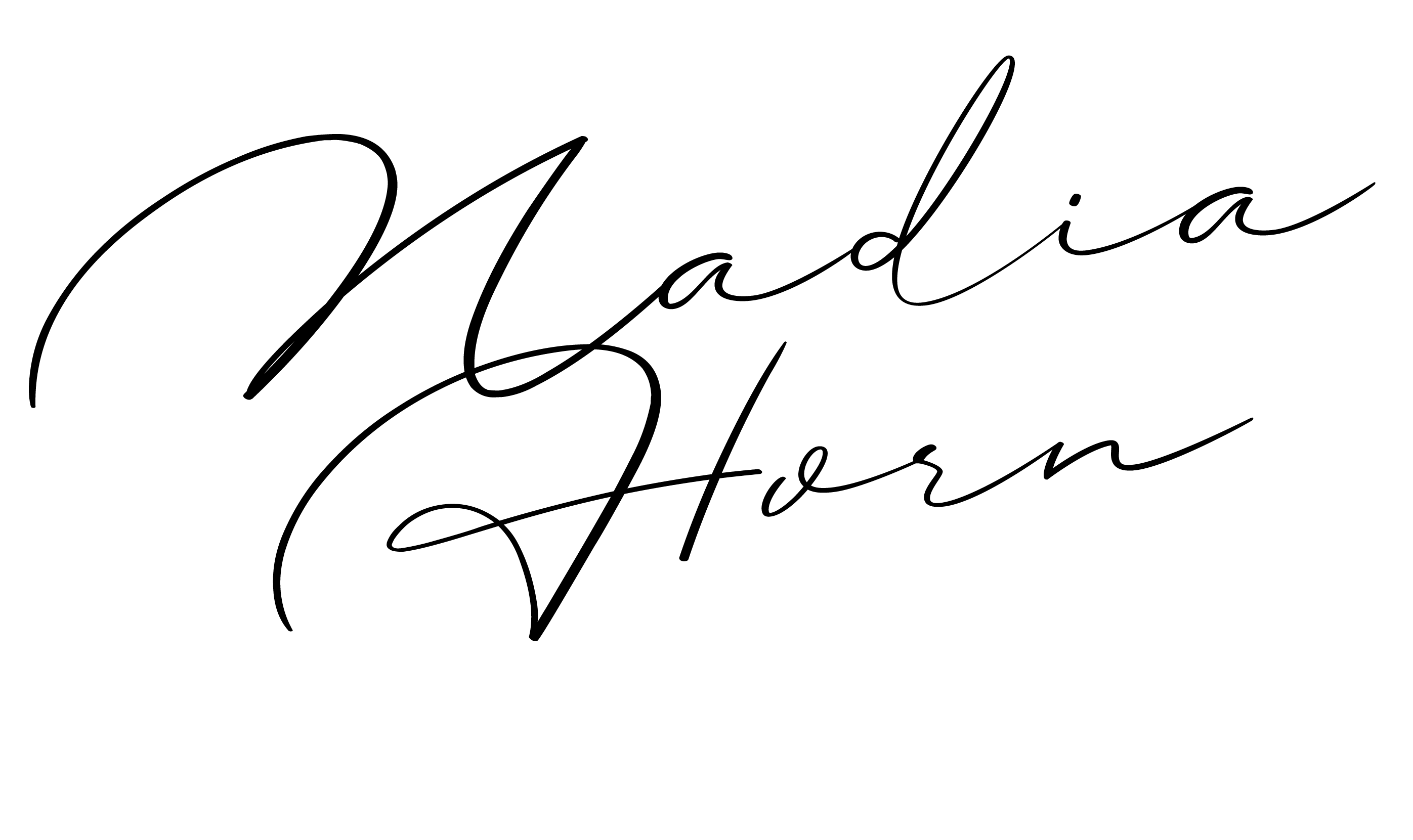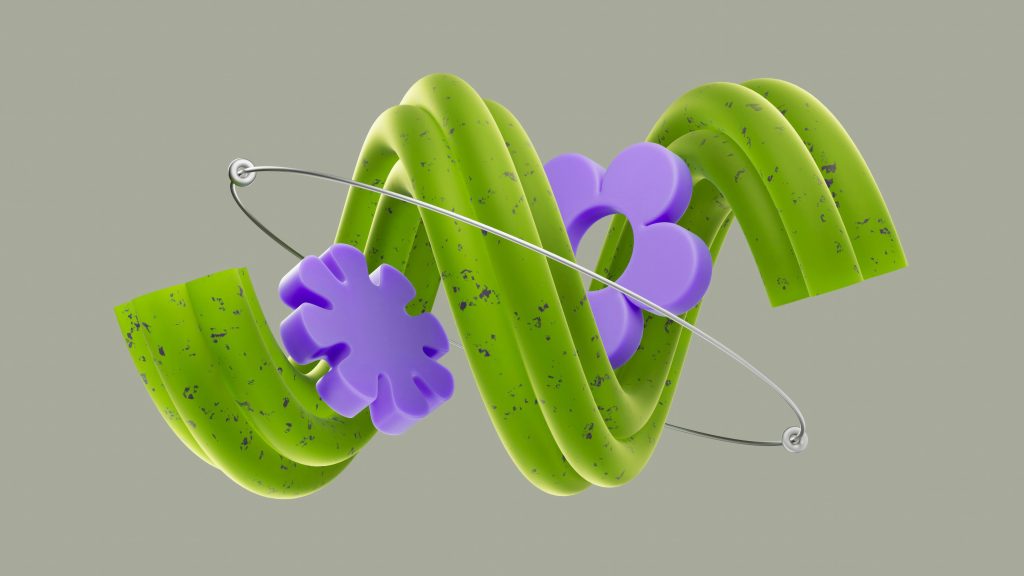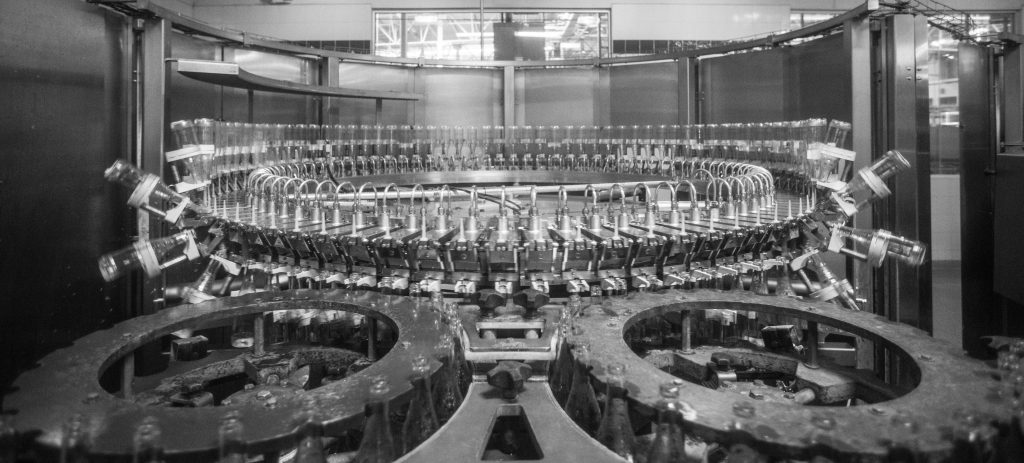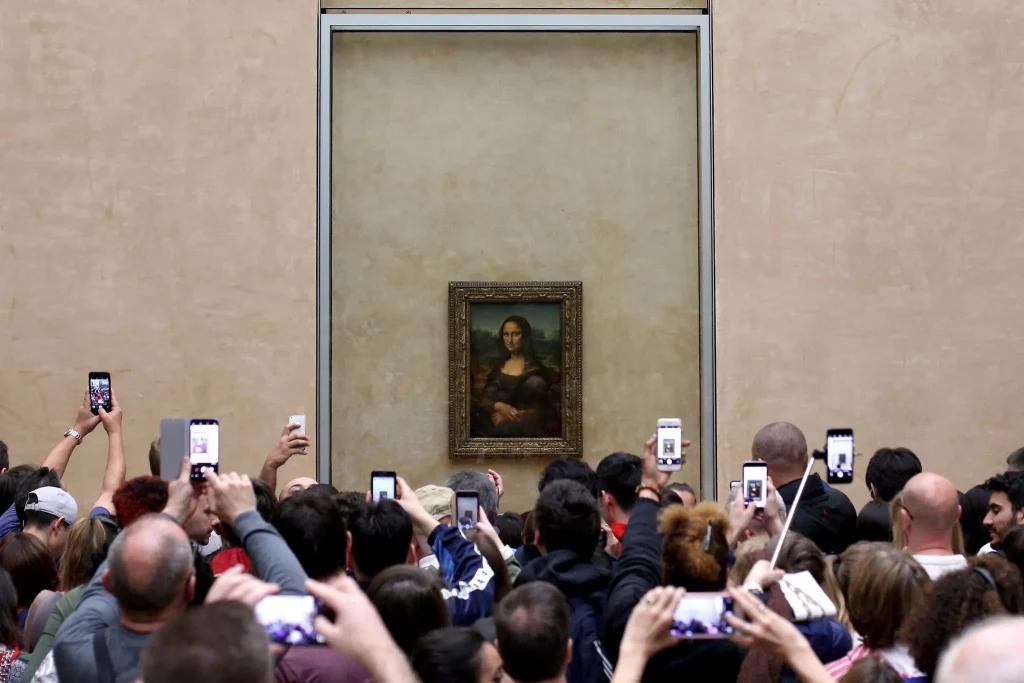
The Centaur (Human + Machine) Approach to Creative Work
The talk of the town, Artificial Intelligence (AI). This new frontier, especially in the realm of visual design and communication, promises to usher in a new era of creativity and efficiency. Straight out of science fiction short story by Roald Dahl’s “The Great Automatic Grammatizator,” AI-powered automation is transforming how
Improvement Plan:
Curiosity as the Safeguard
Nadia Horn /// August 17, 2025
In his commencement speech to Stanford’s graduating class, Steve Jobs recalled the farewell message on the back cover of the Whole Earth Catalog: “Stay hungry, stay foolish.” In the context of design and communication, especially in our relationship with new technology, the phrase is a reminder to never lose curiosity and to embrace unconventional paths.
Creativity can’t thrive without curiosity. Curiosity drives divergent thinking and exploration (Kenett et al., 2023). It’s the foundation of problem-solving and aesthetic experiences. Without it, creative practice risks becoming formulaic and uninspiring. And that’s quite a troubling prospect in today’s digital world, already saturated with generic, templated content.
The problem isn’t with the tools provided by the new technology today. It’s the way our industry chases speed, metrics, and convenience at the expense of purpose, authenticity, and human value. We’ve seen this before. Legacy news media that lowered reporting standards to chase entertainment and social media trends paid a steep price (Purdy, 2024). They lost trust and their audience. Designers and visual communicators face the same risk if we rely too heavily on algorithms, AI templates, or hollow “engagement hacks.”
Your feed is already proof of this. Social media rewards sameness, pushing trend-heavy, look-alike visuals, and the audiences are growing tired of it. They crave work that feels alive and meaningful, not manufactured. The same is true in data storytelling. Charts and infographics are everywhere, but the ones designed with curiosity, asking the right questions of the data, cut through.
Curiosity is not just about collecting trivia but about recognizing knowledge gaps and pursuing answers. That pursuit forces deeper questioning, reflection, and evaluation. In other words, critical thinking. It’s questioning assumptions, exploring alternatives, and probing for better solutions. It’s what keeps us from taking new technology at face value, whether we’re experimenting with AR, building data narratives, or using AI as a creative partner.
And curiosity links directly to openness. It means drawing from psychology to understand behavior, anthropology to respect cultural context, and ethics to guide decisions about influence and responsibility. This cross-disciplinary spirit anchors design in human value rather than algorithmic reward.
If we lose that, design risks becoming just another templated layer in an already crowded digital world. But if we keep curiosity at the center, we can build work that is creative, responsible, and impossible to confuse with the noise.
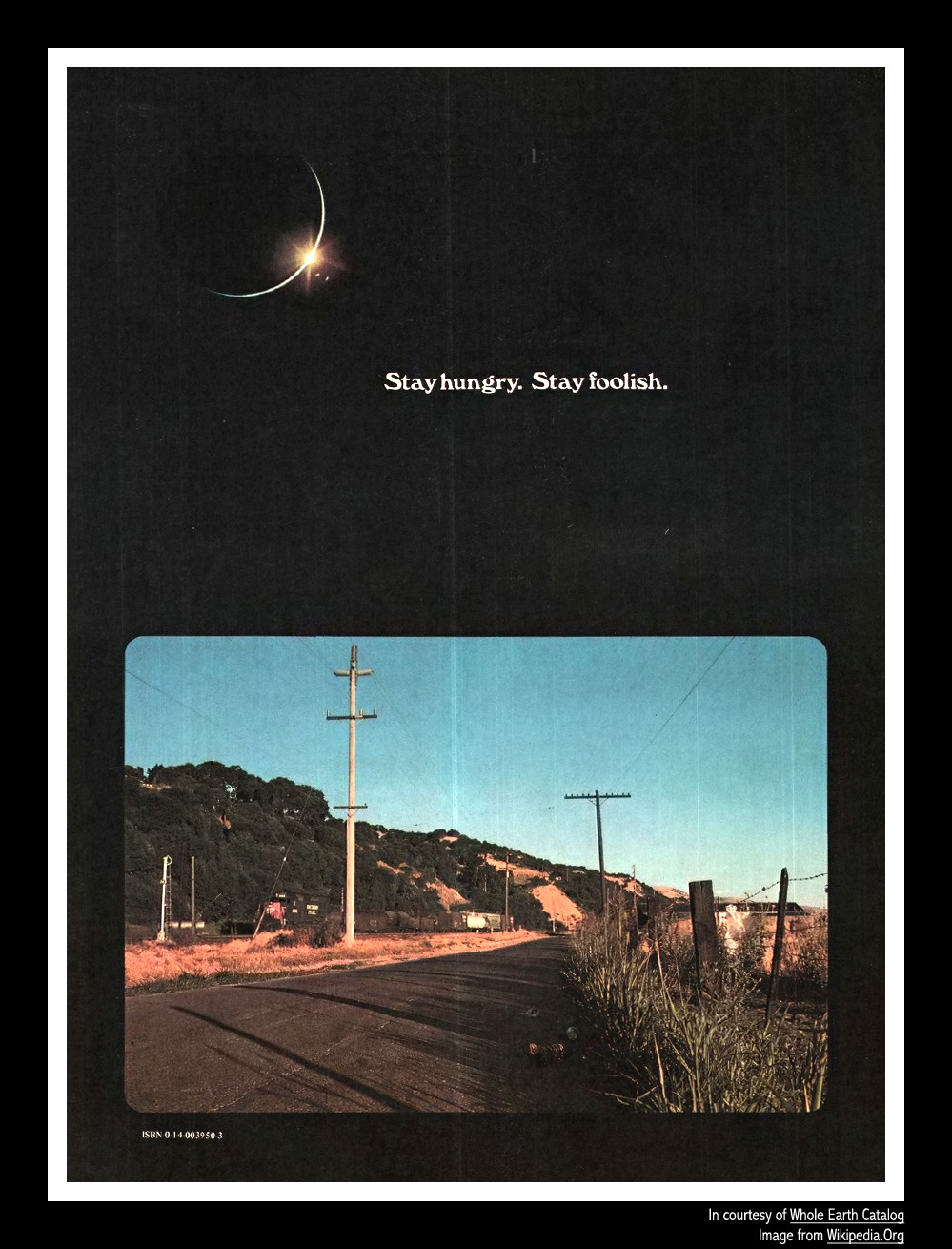
References:
Kenett, Y. N., Humphries, S., & Chatterjee, A. (2023). A thirst for knowledge: Grounding curiosity, creativity, and aesthetics in memory and reward neural systems. Creativity Research Journal, 35(3), 412–426. 10.1080/10400419.2023.2165748
Purdy, E. R., PhD. (2024). Readership declines. Salem Press.
Steve jobs’ 2005 stanford commencement address, & Standford (Director). (2008, Mar 8). [Video/DVD] YouTube. https://www.youtube.com/watch?v=UF8uR6Z6KLc
Whole Earth Catalog. (1974). Back cover
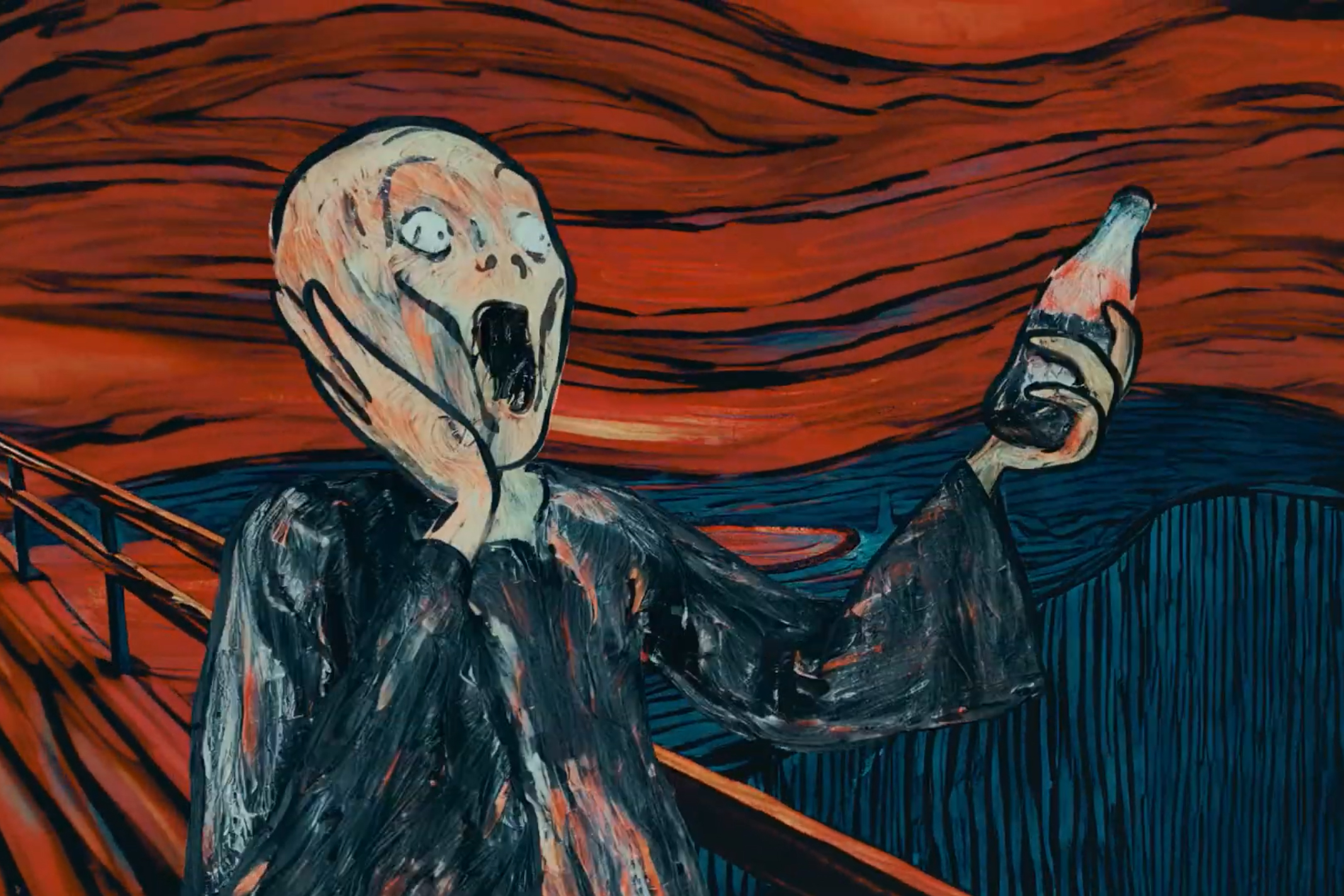
AI Redefining Authorship and Creative Norms
In the early 20th century, artists stood at the edge of a new world. Airplanes had taken flight, Einstein was reshaping time and space, and industry was rewriting how people lived. Mechanical reproduction was transforming the techniques and notion of art (Benjamin, 1969). “Together, these innovations in technology and science
annotated bibliography:
Articles of Interest
Five charts that changed the world
BBC Ideas (2023, May 4)
This video from BBC Ideas highlights five historical examples that demonstrate the profound impact of data visualizations on society. The examples include a dot map by John Snow that proved waterborne transmission and helped change health policy, Florence Nightingale’s coxcomb chart that influenced military and hospital reforms across Britain, W.E.B. Du Bois’s hand-drawn data visualizations that documented black life in America post-slavery, challenging racist narratives, the Kallikak Family Tree chart that was used to misinform the public, leading to devastating social policies, and Ed Hawkin’s color-based chart that became a visual symbol of climate change. The video’s message is that the charts can be used as tools of influence, and when used well, they can challenge dominant narratives and drive change.
BBC Ideas produces content aimed at a general audience, with a particular focus on younger viewers. This video is especially relevant for students and professionals in communication, media, and design. As part of the BBC, a globally respected news organization, this source is credible. The video uses clear, well-documented historical examples to support its message.
This video addresses directly the rise of big data and the growing field of data storytelling. It provides an important historical foundation for understanding the importance of visual communication, especially in today’s digital environment saturated with massive amounts of data. It will also serve as an interactive example complementing the overall research.

AI, copyright, and the law: The ongoing battle over intellectual property rights
Bondari, N. (2025), Gould School of Law
This article provides a clear overview of the debate surrounding AI-generated content and copyright protection from a legal perspective. It focuses on whether AI-generated content qualifies for protection, the legality of using AI-generated material for training AI models, and emerging legislation aimed at addressing these issues. Bondari contrasts U.S. legal approaches with international developments in the EU and China, and outlines current court cases, analyzing how new laws may shape future practice.
Negar Bondary is a contributor to the IP & Technology Law Society at USC’s Gould School of Law, a credible source for legal analysis. The article is based on legal expertise and intended for readers interested in copyright and technology. It is particularly useful to professionals in the creative and digital industries due to its practical context.
This source adds important legal context to the overall research. As AI technology becomes common in visual communication, understanding the boundaries of authorship and ownership is crucial. Bondary’s article explores how copyright law is struggling to keep up with new technology and can be used to demonstrate how creative rights are being tested and redefined in the digital era.

How generative AI could disrupt creative work
Cremer, D. D., Morini Bianzino, N., & Falk, B. (2023), Harvard Business Review
This article explores three possible futures for how generative AI might affect creative work. The authors theorize that AI will either boost human creativity, overwhelm our digital environment with synthetic content, or make human-made work more valuable. They discuss risks such as content overload, weakened incentives for human originality, and intellectual property disputes. The authors also emphasize the increasing need for human-AI collaboration and the importance of human authenticity in digital content, as well as provide recommendations for how professionals and companies can prepare for this digital shift.
The article targets creatives and communication professionals interested in AI-driven changes within their industries. David De Cremer is a professor of management and director of the Centre on AI Technology for Humankind at NUS Business School. Nicola Morini Bianzino is EY’s Global Chief Technology Officer, and Ben Falk is a director in EY’s Emerging Technology Lab. Their combined academic and industry backgrounds give strong credibility to the article, which is published by Harvard Business Review, a respected source of business thought leadership.
This source contributes to the research by examining the influence of generative AI as both a threat and an opportunity in creative fields. It helps illustrate the idea that AI is changing how we perceive creativity and how these new tools might shape the future of visual communication.

Data storytelling - the 7 design principles for narrating an effective data story
Deshpande, M. (2023), Journal of Artificial Intelligence & Cloud Computing, 10.47363/JAICC/2023(2)322
This article presents a practical framework for developing effective data stories, based on seven design principles. Deshpande explains how clear context, well-chosen visuals, high data-ink ratio, Gestalt design principles, whitespace, narrative guidance, and repetition contribute to data storytelling that engages, resonates, informs, and inspires action. The article responds to the current data-heavy environment and the “debilitating effects of data paralysis,” offering practical strategies to transform complex data sets into clear and compelling narratives.
Mahesh Deshpande is a business transformation consultant at Genpact in California, specializing in translating complex concepts into narratives with a focus on AI, technology, and innovation. His professional background in data product management and experience in the tech sector lend credibility to the article’s focus. Although Deshpande’s affiliation with Genpact, a global consulting firm, suggests a business-oriented perspective and the potential for industry bias, the article remains useful for its practical framework rooted in established communication and design theory. The intended audience includes designers and business professionals seeking to make data more understandable and persuasive.
This source supports the research project by providing a structured and practical approach to visual communication in the context of big data. It can be used to demonstrate how design and narrative choices influence the interpretation of data. It also reinforces the idea of a cultural shift from passive data reporting to interactive storytelling in professional and public communication.

AI and work in the creative industries: Digital continuity or discontinuity?
Erickson, K. (2024), Creative Industries Journal, 10.1080/17510694.2024.2421135
In this article, Erickson explores the impact of generative AI on creative labor. He finds that AI doesn’t replace human creativity, but instead reshapes the creative process by introducing new types of tasks. He finds that human involvement remains central, and AI marketing often exaggerates AI’s role by downplaying the human labor behind AI-generated work.
This article is intended for students and professionals interested in technology and its effects on creative labor. Erickson is a professor of social data science at the University of Glasgow and a leading researcher in digital policy and creative industries. This article is published in the Creative Industries Journal, a respected outlet, making it a credible source.
This article supports the research by demonstrating how AI tools are changing the way creative work is done. It offers a different perspective that emphasizes the need to look beyond the technology itself and understand the human effort behind it. Erickson suggests that even though AI may reshape production, it will not necessarily reduce human involvement.
User experience and experience design
Hassenzahl, M. (2014), The Encyclopedia of Human-Computer Interaction, 2nd Ed.
In this article, Marc Hassenzahl provides a comprehensive and practical exploration of user experience design. It focuses on how digital products and content can create meaningful experiences rather than just deliver facts and functionality. The author argues that people now value experiences more than material things, illustrating his points with colorful examples like the infamous Roald Dahl’s Charlie and the Chocolate Factory, where Charlie chooses experience over selling the ticket for money. Hassenzahl introduces the idea that good experience design begins with understanding why a product is used, the emotional goal, and then defines what it should do and how it should work. He urges designers to think beyond usability and focus on creating designs that support richer, more human experiences.
This article is intended for UX designers, students, and professionals working with digital products. Hassenzahl is a recognized scholar in the field of human-computer interaction and experience design. His research is widely cited and spans both academic and industry practice. The article serves as a chapter for the Encyclopedia of Human-Computer Interaction, 2nd edition, published by the Interaction Design Foundation, a leading platform for UX education, making it credible and accessible to a wide audience.
This source supports the overall research by demonstrating how digital tools influence behavior by shaping emotions, memory, and meaning. It also connects directly to the growing need for visual designers to adopt UX thinking, supporting the shift in design from static visuals to interactive environments. Hassenzahl’s ideas help explain this experimental mindset.

Data storytelling is not storytelling with data: A framework for storytelling in science communication and data journalism
Matei, S. A., & Hunter, L. (2021), The Information Society, 37(5), 10.1080/01972243.2021.1951415
This article offers an interesting perspective that challenges the common assumption that placing data within a narrative automatically creates a compelling story. Matei and Hunter explain that the best stories in science and journalism introduce new, surprising explanations that replace old assumptions. Using historical examples, they illustrate how good stories can connect unexpected causes to familiar outcomes.
The article is intended for journalists, data scientists, and communication professionals interested in using data effectively to inform and persuade. Both authors are affiliated with Purdue University’s Brian Lamb School of Communication, giving this article academic credibility.
This source supports the research by providing a different perspective on what can make a data story meaningful and effective. It supports the idea that it’s not just about designing for clarity and aesthetics. Visual and digital communicators need to think beyond presentation and consider the emotional impact and cognitive engagement of the story. From Matei and Hunter’s perspective, by challenging assumptions and provoking curiosity.
